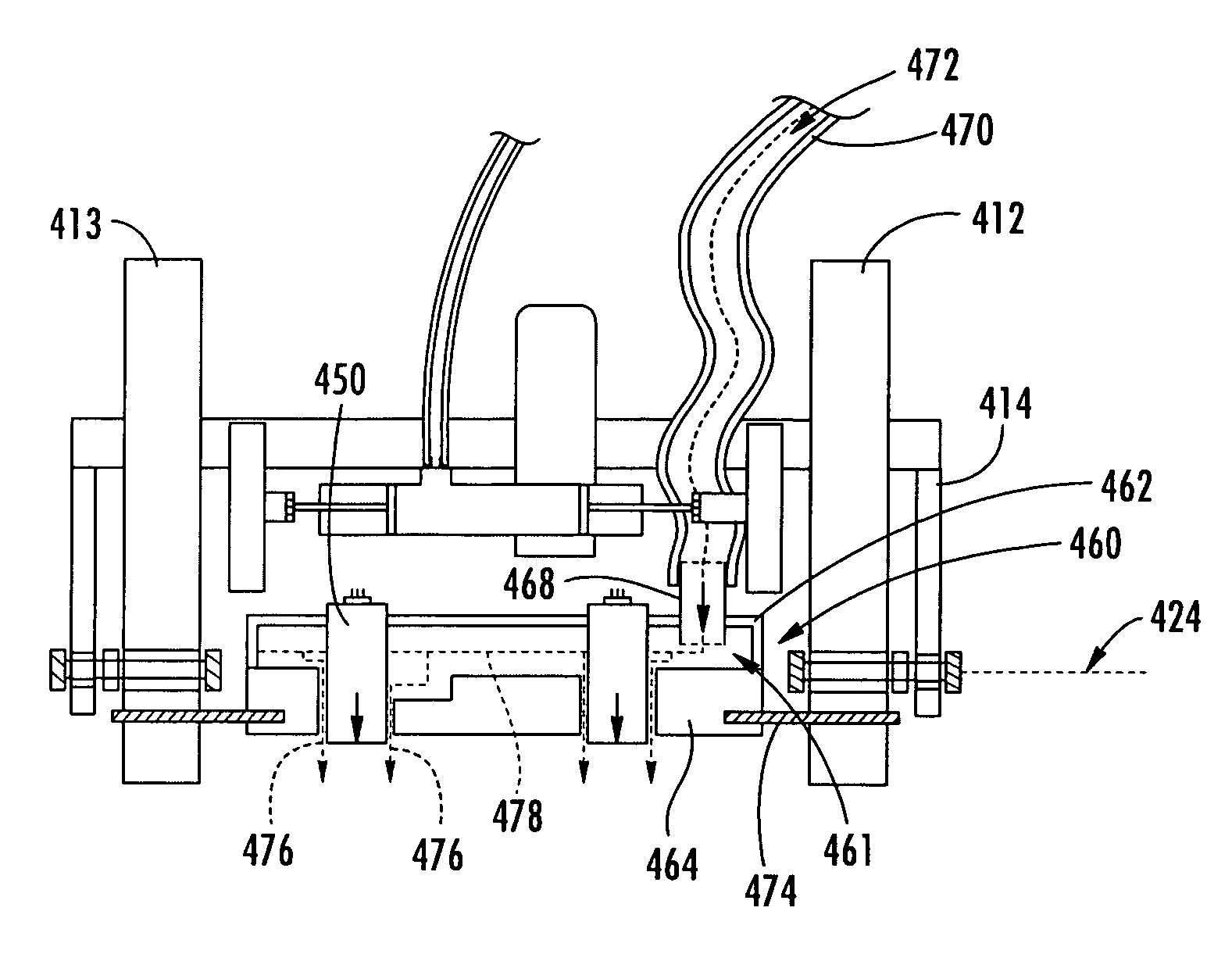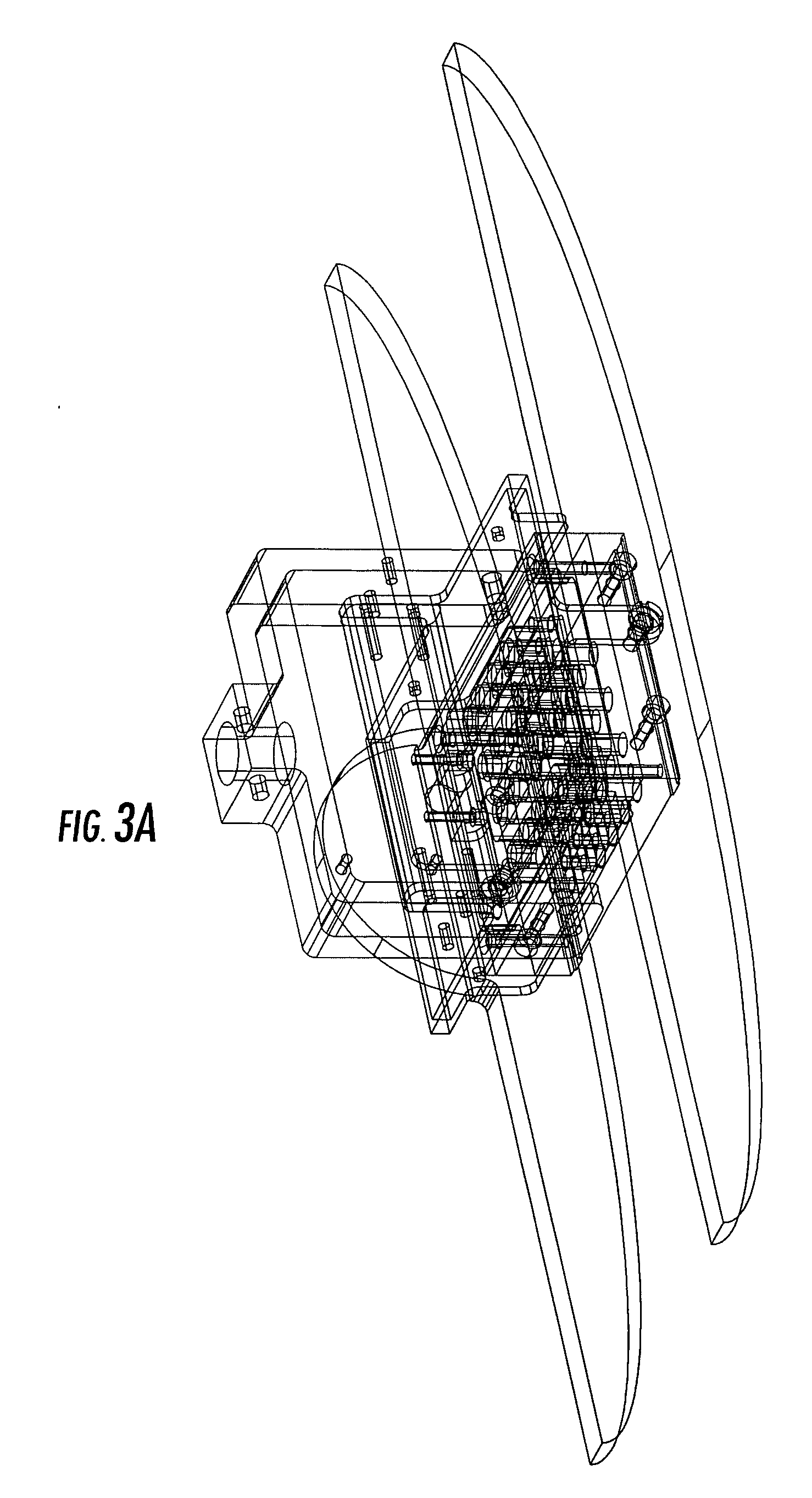Ultrasonic array probe apparatus, system, and method for traveling over holes and off edges of a structure
a technology of ultrasonic array and probe apparatus, which is applied in the direction of instruments, heat measurement, specific gravity measurement, etc., can solve the problems of not always being able to perform continuous scanning of the structure with holes, introducing additional time and labor, and restricting the access to the interior surface of the structur
- Summary
- Abstract
- Description
- Claims
- Application Information
AI Technical Summary
Benefits of technology
Problems solved by technology
Method used
Image
Examples
Embodiment Construction
[0023] The present invention will be described more fully with reference to the accompanying drawings. Some, but not all, embodiments of the invention are shown. The invention may be embodied in many different forms and should not be construed as limited to the described embodiments. Like numbers and variables refer to like elements and parameters throughout the drawings.
[0024] The term “holes” refers to holes of varying sizes in a structure, including features described as “cut-outs” in the structure. The term “edges” refers generally to the sides of the structure, but also includes reference to the perimeter of holes, particularly large holes or cut-outs through which a conventional part-riding probe might fall through. Thus, holes may be described as having edges, and the term edges is inclusive of both an external perimeter of a structure and perimeters of internal holes in the structure. Although being characteristically different, for purposes of the present invention holes a...
PUM
| Property | Measurement | Unit |
|---|---|---|
| structure | aaaaa | aaaaa |
| pressure | aaaaa | aaaaa |
| porosity | aaaaa | aaaaa |
Abstract
Description
Claims
Application Information
 Login to View More
Login to View More - R&D
- Intellectual Property
- Life Sciences
- Materials
- Tech Scout
- Unparalleled Data Quality
- Higher Quality Content
- 60% Fewer Hallucinations
Browse by: Latest US Patents, China's latest patents, Technical Efficacy Thesaurus, Application Domain, Technology Topic, Popular Technical Reports.
© 2025 PatSnap. All rights reserved.Legal|Privacy policy|Modern Slavery Act Transparency Statement|Sitemap|About US| Contact US: help@patsnap.com



